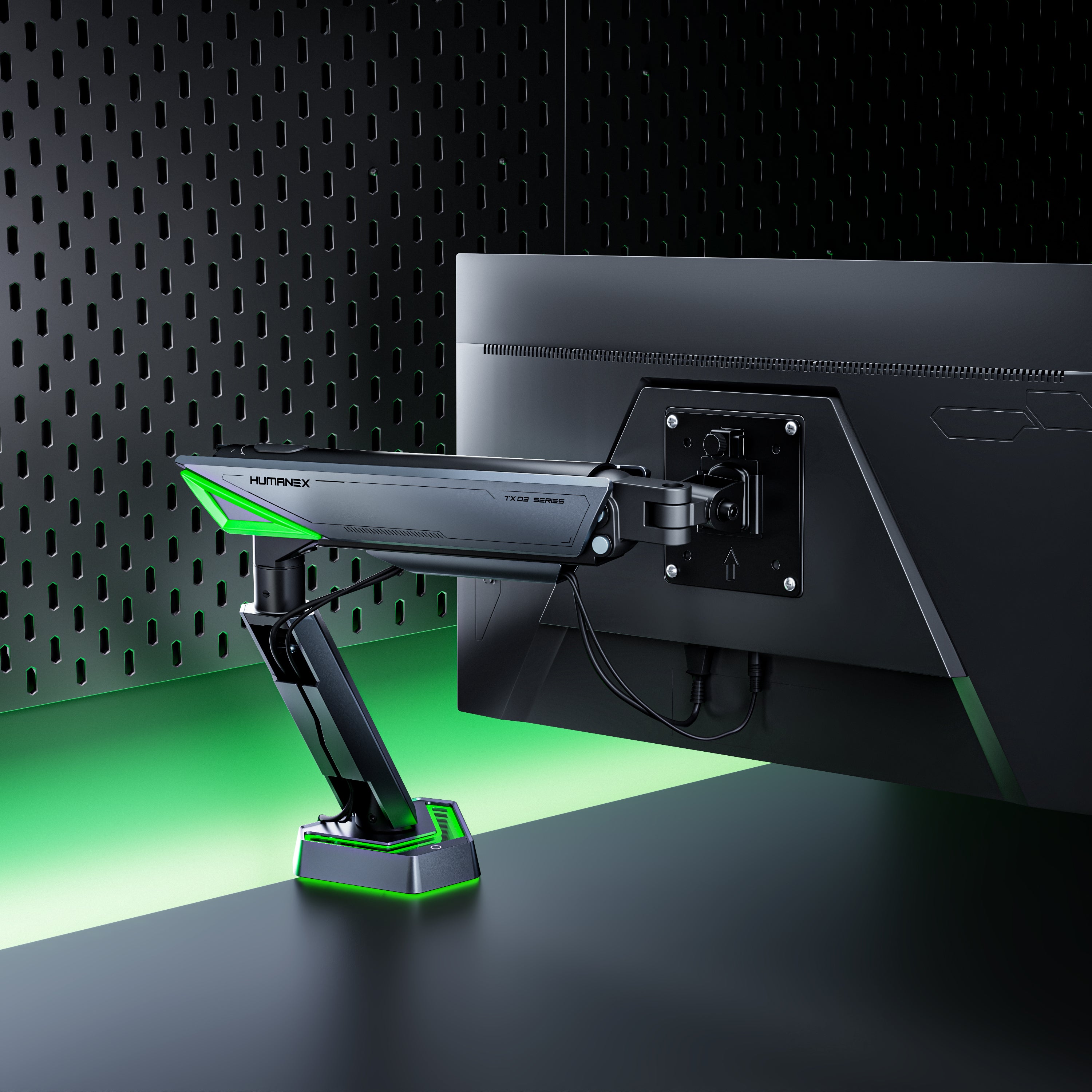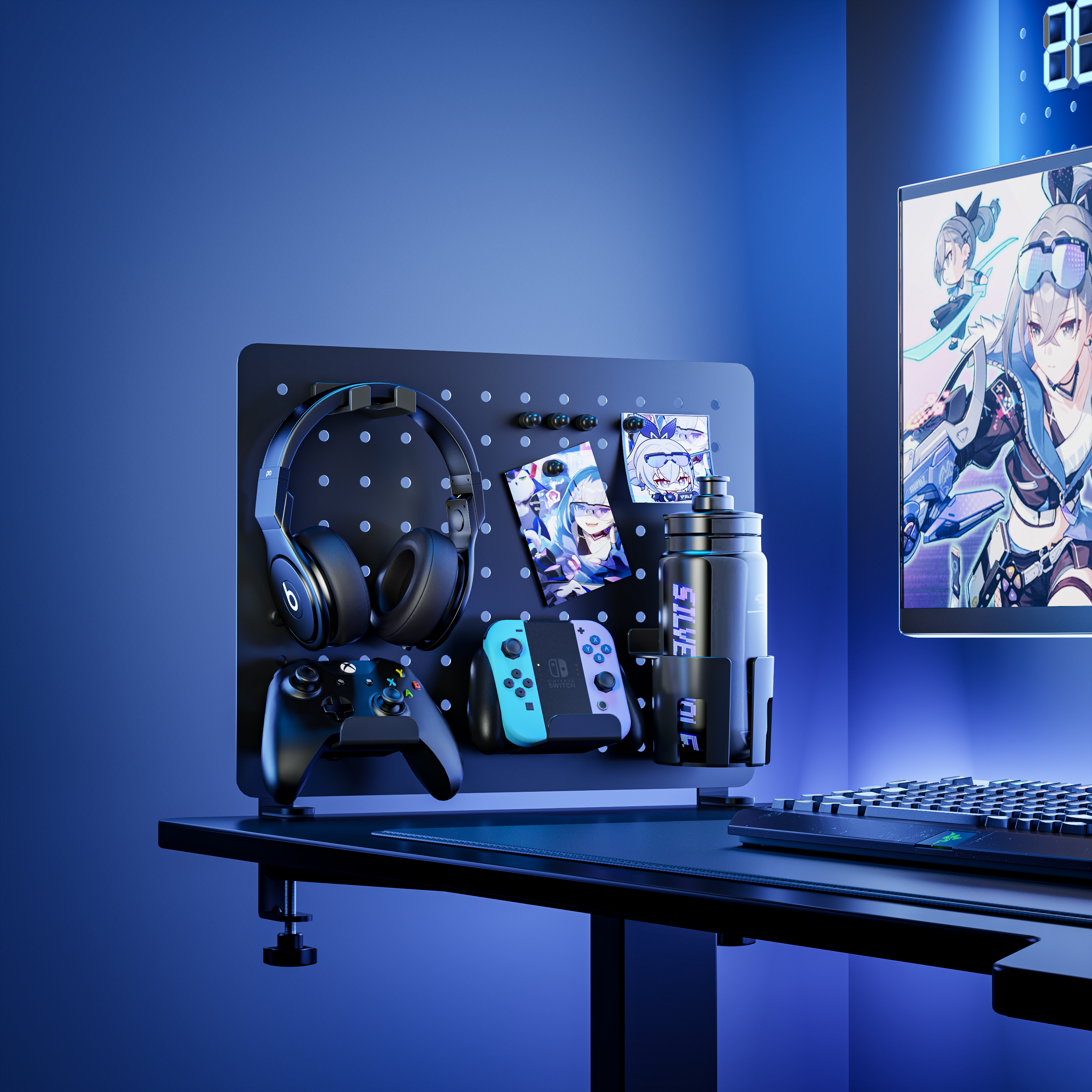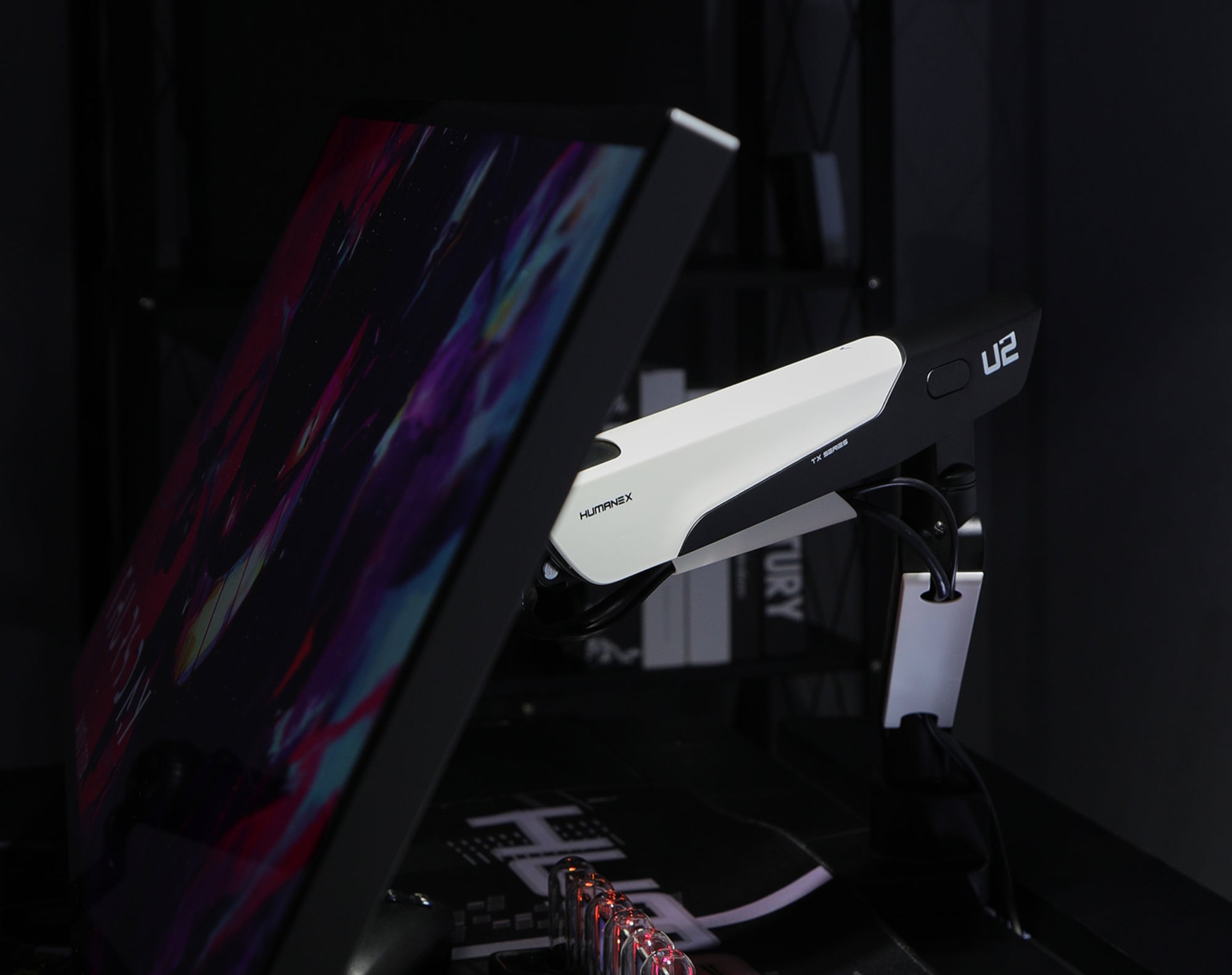How a Subpar Monitor Arm Destroys Your Workflow and Cognitive Health
Do you find yourself constantly losing momentum by mid-afternoon? Do you scroll aimlessly, struggling to sustain the mental energy required for deep work? You might blame your diet, your sleep, or simply a lack of motivation.
However, the real, often-overlooked culprit might be right in front of you, subtly draining your mental reserves: your non-ergonomic desk setup, anchored by a rigid, inadequate monitor stand.
It’s time to stop the self-blame. We are diving deep to explain how a simple accessory—the Monitor Arm—determines the depth of your concentration, and why upgrading to a precision-engineered solution like Humanex is the critical investment in your cognitive longevity.
🤯 The Silent Sabotage: How Poor Ergonomics Elevates Cognitive Load

Productivity is not just about physical movement; it’s about cognitive bandwidth. When your body is uncomfortable, your brain allocates precious resources to manage that physical discomfort, diverting energy away from the task at hand. This is known in cognitive science as increasing Extraneous Cognitive Load.
1. The Cost of Micro-Corrections: Visual and Cervical Strain
Traditional monitor stands—especially those accompanying ultra-wide or curved screens—offer minimal to zero adjustment. This forces your body into unnatural, static positions.
-
The Pain Point: The screen height is too low, forcing you into a prolonged head-down posture; the distance is too close, forcing your eyes to strain to focus. If using a dual setup, your head must frequently twist and refocus between two screens that aren't properly aligned.
-
The Science: According to Cognitive Load Theory, every minor head or eye adjustment is a “Micro-Interruption.” The brain must constantly monitor and try to correct your posture, and this dispersed attention quickly exhausts your Working Memory capacity. Your neck muscles may only feel a mild strain, but your brain is secretly overloaded.
2. The Tax of Visual Clutter from a Messy Desk
A desk dominated by a bulky stand and invaded by tangled cables looks visibly chaotic.
-
The Pain Point: The traditional base monopolizes the most valuable central desk space, and power, video, and data cables sprawl within your visual field.
-
The Science: Psychological studies indicate that visual chaos in the environment competes for your brain’s “Executive Functions.” Your prefrontal cortex, which should be utilized for complex decision-making and problem-solving, is instead being tasked to filter and suppress background visual noise. A cluttered desk acts as a continuous, low-intensity stressor.
3. 📉 The Efficiency Penalty of Zero Flexibility
Whether you need to switch to a standing posture, temporarily share your screen with a colleague, or quickly flip your screen to Portrait Mode for document review, a fixed stand makes it nearly impossible.
-
The Pain Point: Changing your work posture or mode takes minutes, sometimes requiring tools, severely hindering the fluidity of your workflow.
-
The Cognitive Drain: This high-friction adjustment process means you are more likely to endure discomfort than make a change, locking in poor ergonomics. Ultimately, your efficiency is passively reduced, making it difficult to adapt to varied task demands.
🏆 Engineered for Focus: How the Humanex Monitor Arm Protects Your Cognitive Resources

The design philosophy of the Humanex Monitor Arm is to minimize Extraneous Cognitive Load and maximize your comfort and focus.
1. 🔬 Precision Gas Spring System: Enabling "Zero Gravity" Adjustment
The core advantage of Humanex lies in its use of industry-leading high-precision Gas Springs or advanced mechanical engineering.
-
Unrivaled Smoothness: Gas spring technology uses inert gas to provide exact counterbalancing force. This means that no matter how heavy your large monitor is, you can adjust its height, depth, and tilt with a mere fingertip, making the screen feel as if it is floating in space.
-
Goodbye Wobble and Sag: Unlike cheaper mechanical springs, Humanex is engineered to provide rock-solid stability, eliminating the wobble that occurs during typing, standing desk transitions, or accidental bumps. This stability is crucial for eliminating micro-distractions.
2. 🛠️ Industrial-Grade Material: Trust in Longevity
Humanex arms, such as the heavy-duty TX03 series, use high-strength aerospace-grade aluminum or rugged industrial steel, guaranteeing the long-term support for massive displays.
-
Weight Assurance: Specifically designed for large monitors (34 inches and up), they easily support weights up to 16kg (35.3 lbs), exceeding the average market standard.
-
Design Aesthetics: The innovative mecha or streamlined look transforms the arm from a "clunky tool" into a "desktop sculpture," enhancing the overall professionalism and aesthetic of your workstation.
3. 🔌 Integrated Cable Management: Eradicating Visual Chaos
Humanex treats cable management as a vital element in reducing cognitive burden.
-
Hidden Channels: The arm features integrated or detachable routing channels that perfectly conceal all video and power cables, guiding them along the arm and making them disappear from your sightline.
-
The Result: A clean, minimalist desktop environment allows your brain to focus entirely on the content on the screen, effectively neutralizing environment-induced distraction tendencies.
4-Step Guide: Building Your Cognitive "Efficiency Hub" with Humanex
Owning the best Monitor Arm is only the first step; correct setup is key to unlocking its full potential for focus.
| Setup Step | Goal | Humanex Advantage |
| 1. Perfect Height | Eliminate Neck Strain. The top edge or top third of your screen should be at or slightly below eye level when sitting upright. | Gas spring provides continuous adjustment, allowing calibration to millimeter-level precision. |
| 2. Optimal Distance | Reduce Eye Fatigue. The screen should be positioned roughly at arm’s length (approx. 20-30 inches / 50-75 cm). | The articulated arm allows easy adjustment of the screen’s depth, eliminating the need to physically lean in or slouch. |
| 3. Tilt Angle | Prevent Glare and Reflection. The screen should be tilted slightly upwards by 10-20 degrees to accommodate the eye's natural downward gaze. | The arm provides precise tilt locking functionality, preventing the screen from moving unexpectedly. |
| 4. Dual-Screen Alignment | Eliminate Visual Jumps. If using multiple monitors, the screen edges must be perfectly aligned at the same height and depth. | High-quality arms ensure the precision and range of motion necessary for a seamless transition between screens. |
💡 Conclusion: Investing in Comfort is Investing in Performance
Your low productivity might genuinely not be your fault. If you are fighting a continuous "micro-battle" with an unergonomic environment every day, your flow state and focus will inevitably collapse.
The Monitor Arm is a critical tool that frees your body from unnecessary strain, allowing your brain to dedicate its full power to thinking and creating.
Upgrade your desk from a "distraction trap" to an efficient "digital cockpit"—investing in a Humanex Monitor Arm is the smartest decision you can make for your long-term health and high-value output.
👉 Choose Humanex today to build a stress-free environment for your cognitive performance!








Leave a comment
All comments are moderated before being published.
This site is protected by hCaptcha and the hCaptcha Privacy Policy and Terms of Service apply.